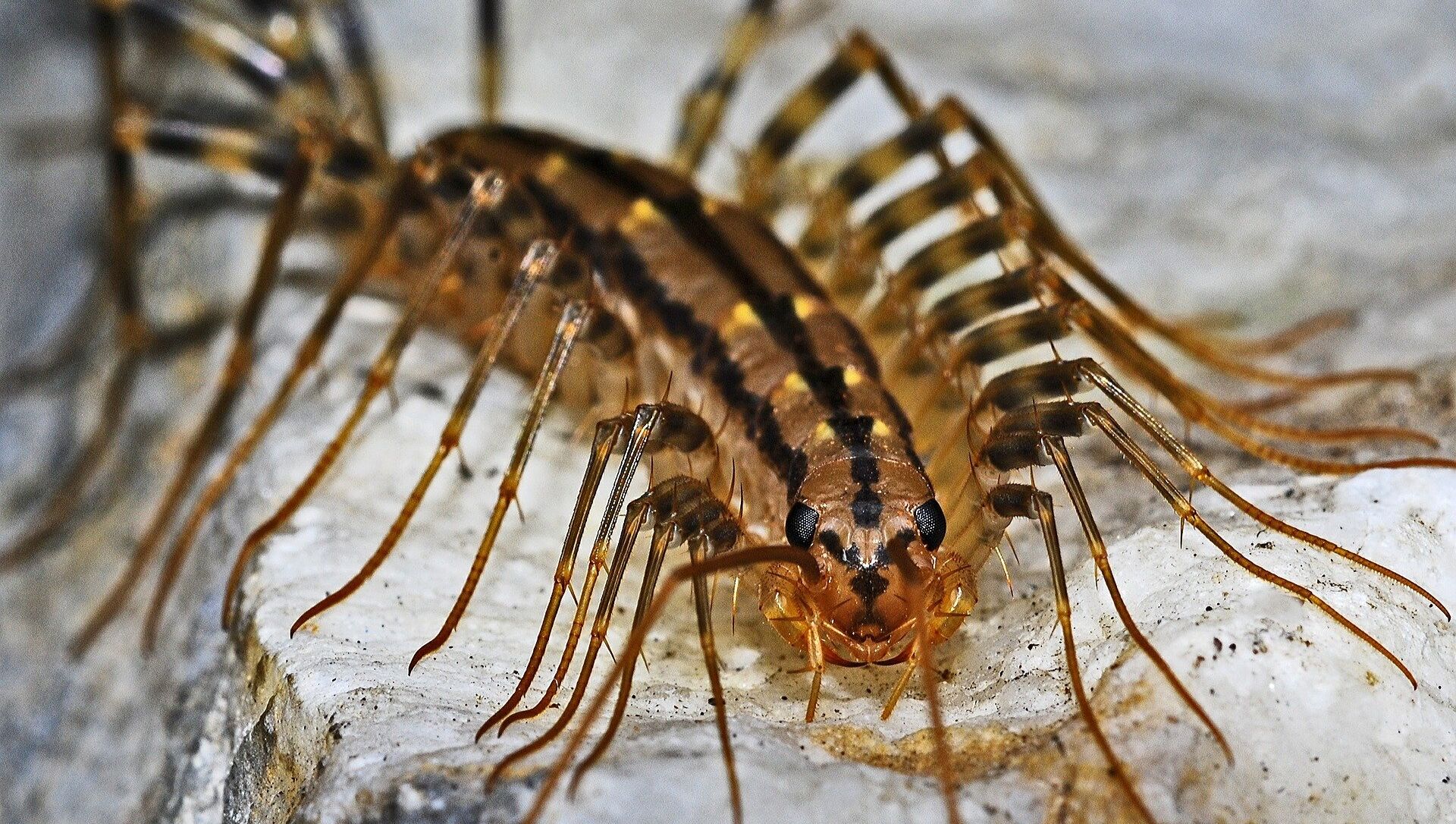https://sputnikglobe.com/20210823/carnivorous-centipedes-can-kill--eat-up-to-3700-seabird-chicks-a-year---scientists-reveal-why-1083690455.html
Carnivorous Centipedes Can Kill & Eat up to 3,700 Seabird Chicks A Year - Scientists Reveal Why
Carnivorous Centipedes Can Kill & Eat up to 3,700 Seabird Chicks A Year - Scientists Reveal Why
Sputnik International
According to scientists, centipedes target seabird nestlings which, because of their small body and defenceless state, are at a relatively vulnerable stage in... 23.08.2021, Sputnik International
2021-08-23T11:21+0000
2021-08-23T11:21+0000
2022-10-19T18:53+0000
newsfeed
world
centipede
predator
ecosystem
environment
https://cdn1.img.sputnikglobe.com/img/105017/16/1050171644_0:101:1920:1187_1920x0_80_0_0_607a591c0ba5600f4ef73e9306cbcc38.jpg
Centipedes, elongated metameric or segmented creatures that often look creepy, have given us another reason to fear them.A new study has revealed that giant, carnivorous centipedes on a South Pacific island can kill and eat up to 3,700 seabird chicks every year. This particular type of centipede, the Phillip Island centipede (Cormocephalus coynei), is ferocious and grows to be nearly 30 centimetres in length. It also has a powerful venom that it injects into unwitting victims through pincer-like "forcipules".According to the scientists Luke Halpin, Rohan Clarke and Rowan Mott from Australia's Monash University, these centipedes have become alpha predators on Phillip Island by hunting and eating thousands of newly hatched black-winged petrels (Pterodroma nigripennis) each year. This has also become an important factor in the island's ecosystem.This is the first reported instance of centipedes preying upon seabirds, according to the study that recently came out in the journal The American Naturalist.These centipedes are strictly nocturnal and use their two ultra-sensitive antennae to locate their prey. Their choice of consumption ranges from crickets to seabird chicks, geckos and skinks, and even fish. To study the eating habits of these arthropods, the team performed their feeding activities at night and recorded what prey the centipedes were targeting."We also monitored petrel chicks in their burrow nests every few days, for months at a time. We eventually began to see consistent injury patterns among chicks that were killed. We even witnessed one centipede attacking and eating a chick," the researchers said. The team calculated that the centipedes consume between about 2,100 to 3,700 petrel chicks each year.Until a few decades ago, the Phillip Island centipede was very rare and it was officially described as a species in 1984. The black-winged petrels are a high-quality food source for the Phillip Island centipede and have helped the species to increase its population.
Sputnik International
feedback@sputniknews.com
+74956456601
MIA „Rossiya Segodnya“
2021
Sushmita Panda
https://cdn1.img.sputnikglobe.com/img/07e5/05/12/1082926186_0:0:2048:2048_100x100_80_0_0_4474d0d7e27a36878eb8727832be74b4.jpg
Sushmita Panda
https://cdn1.img.sputnikglobe.com/img/07e5/05/12/1082926186_0:0:2048:2048_100x100_80_0_0_4474d0d7e27a36878eb8727832be74b4.jpg
News
en_EN
Sputnik International
feedback@sputniknews.com
+74956456601
MIA „Rossiya Segodnya“
Sputnik International
feedback@sputniknews.com
+74956456601
MIA „Rossiya Segodnya“
Sushmita Panda
https://cdn1.img.sputnikglobe.com/img/07e5/05/12/1082926186_0:0:2048:2048_100x100_80_0_0_4474d0d7e27a36878eb8727832be74b4.jpg
newsfeed, centipede, predator, ecosystem, environment
newsfeed, centipede, predator, ecosystem, environment
Carnivorous Centipedes Can Kill & Eat up to 3,700 Seabird Chicks A Year - Scientists Reveal Why
11:21 GMT 23.08.2021 (Updated: 18:53 GMT 19.10.2022) According to scientists, centipedes target seabird nestlings which, because of their small body and defenceless state, are at a relatively vulnerable stage in their life. This is the first example in which seabirds have been identified as the direct prey of an arthropod.
Centipedes, elongated metameric or segmented creatures that often look creepy, have given us another reason to fear them.
A new study has revealed that giant, carnivorous centipedes on a South Pacific island can kill and eat up to 3,700 seabird chicks every year. This particular type of centipede, the Phillip Island
centipede (
Cormocephalus coynei), is ferocious and grows to be nearly 30 centimetres in length. It also has a powerful venom that it injects into unwitting victims through pincer-like "forcipules".
According to the scientists Luke Halpin, Rohan Clarke and Rowan Mott from Australia's Monash University, these centipedes have become alpha predators on Phillip Island by hunting and eating thousands of newly hatched black-winged petrels (Pterodroma nigripennis) each year. This has also become an important factor in the island's ecosystem.
"In some sense, they've taken the place (or ecological niche) of predatory mammals, which are absent from the island," the researchers wrote in The Conversation.
This is the first reported instance of centipedes preying upon seabirds, according to the study that recently came out in the journal
The American Naturalist.
These centipedes are strictly nocturnal and use their two ultra-sensitive antennae to locate their
prey. Their choice of consumption ranges from crickets to seabird chicks, geckos and skinks, and even fish. To study the eating habits of these arthropods, the team performed their feeding activities at night and recorded what prey the centipedes were targeting.
"We also monitored petrel chicks in their burrow nests every few days, for months at a time. We eventually began to see consistent injury patterns among chicks that were killed. We even witnessed one centipede attacking and eating a chick," the researchers said. The team calculated that the centipedes consume between about 2,100 to 3,700 petrel chicks each year.
Until a few decades ago, the Phillip Island centipede was very rare and it was officially described as a species in 1984. The black-winged petrels are a high-quality food source for the Phillip Island centipede and have helped the species to increase its population.



